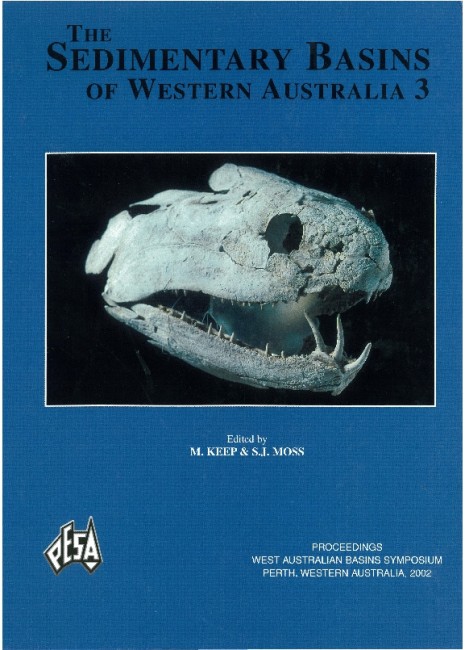Publication Name: The Sedimentary Basins of WA
Authors: J. Backhouse, B.E. Balme, R. Helby, N.G. Marshall & R. Morgan
Publication Volume: 3
Date Published: December 2002
Number of Pages: 40
Reference Type: Book Section
Abstract:
A revised palynological wnation for the latest Triassic (Norian-Rhaetian) of the North West Shelf is presented. The definition of the AshmoripoUis reducta Spore-pollen wne is modified and three subrones are recognised within both the Minutosaccus crenulatus and A. reducta Zones. The Rhaetogonyaulax rhaetica and Dapcodinium priscum Microplankton zones are each sub-divided into two subrones. Five significant palynofloral modifications, called Major Bioevents, are identified and are used to construct a scheme for high-resolution correlation on the Rankin Platform. In addition, seventeen informal biostratigraphic units, referred to as Tr units, are erected.A range of swamp palynofacies associations, interspersed with floodplain, channel and oxidised palynofacies characterise the M. crenulatus Spore-pollen zone. A marine incursion, represented by the H. balmet Microplankton zone, is associated with swamp facies below, and a brief return to swamp facies above. A blocky sandstone unit, the E unit of Woodside Energy Ltd, is developed above the H. balmei Zone on the Rankin Trend, and represents brackish-marginal marine, or channel palynofacies without dinocysts. The return of marginal marine deposition at the base of the A. reducta Sporepollen wne (= base R. rhaetica Microplankton rone) also marks the base of the Brigadier Formation. Within the Brigadier Formation horiwns with common dinocysts are interpreted as flooding surfaces.
The Triassic-Jurassic boundary is placed at that of the A. reducta and CoroUina torosa Spore-pollen rones. A fundamental change in spore-pollen assemblages occurs at this horizon, demonstrating a significant regional palaeoflora! event, and probably indicating a disconformity.


